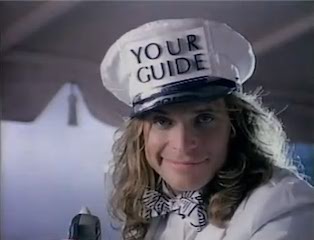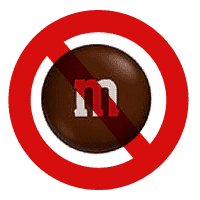How to pass a quality-system audit using Brown M&M’s
6 minute read.
In the 1980’s, the rock-band Van Halen caused $85,000 damage to their dressing room because they found brown M&M’s in their bowl of “munchies.”
Van Halen’s story can help medical-device companies pass an FDA or ISO Quality-System audit. This article shows you how, but the conclusion may not be what you think.
The 80’s

Van Halen, circa 1985
In the 1980’s, Van Halen was one of the most successful bands in history. According to Wikipedia,
[Van Halen’s] lead single, “Jump”, became an international hit and their only single to reach number one on the Billboard Hot 100. The following singles, “Panama” and “I’ll Wait”, both hit number 13 on the U.S. charts. The album went on to sell over 12 million copies in the U.S. alone.
Van Halen toured nationally; concert venues prepared weeks in advance. Their contract required providing “munchies,” including a bowl of M&M’s with the brown ones removed. In 1982, the band destroyed their dressing room after finding brown M&M’s.


35 years later, I use lessons from Van Halen, and brown M&M’s, to help medical-device companies comply with FDA and ISO requirements.
Jump In
Why would Van Halen’s contract require having brown M&M’s removed? That answer will help explain how to pass quality-system audits. My answer is after this video of “Jump. Feel free to sing along while you think about possible reasons one of the world’s most successful bands would add a clause in their contract about brown M&M’s.
“Jump!” by Van Halen, 1984

The answer is that Van Halen used brown M&M’s to guage attention to detail in their contracts. They toured globally, performing several times a week, and were one of the first rock bands using 3rd-party contractors to prepare concert venues according to their specifications. Stages had to withstand the weight of their show, and electrical circuits had to handle requirements for amplifiers, stage effects, and VERY LOUD SPEAKERS. Van Halen used the contract clause about brown M&M’s to quickly guage if complex safety requirements would be met.

Van Halen stage show in the 80’s
Here’s what the lead singer of Van Halen, David Lee Roth, said about brown M&M’s:
Van Halen was the first band to take huge productions into tertiary, third-level markets. We’d pull up with nine eighteen-wheeler trucks, full of gear, where the standard was three trucks, max. And there were many, many technical errors — whether it was the girders couldn’t support the weight, or the flooring would sink in, or the doors weren’t big enough to move the gear through.
The contract rider read like a version of the Chinese Yellow Pages because there was so much equipment, and so many human beings to make it function. So just as a little test, in the technical aspect of the rider, it would say “Article 148: There will be fifteen amperage voltage sockets at twenty-foot spaces, evenly, providing nineteen amperes …” This kind of thing. And article number 126, in the middle of nowhere, was: “There will be no brown M&M’s in the backstage area, upon pain of forfeiture of the show, with full compensation.”
So, when I would walk backstage, if I saw a brown M&M in that bowl … well, line-check the entire production. Guaranteed you’re going to arrive at a technical error. They didn’t read the contract. Guaranteed you’d run into a problem. Sometimes it would threaten to just destroy the whole show. Something like, literally, life-threatening.
You can read an NPR article about David Lee Roth’s views on brown M&M’s, or listen to Dave explain it himself in
Phrasing
Look at Van Halen’s phrasing in their contract:

They clearly indicated NO BROWN ONES, and asked for twelve (12) Reeses’s peanut butter cups. The other phrasing, such as “assorted” dips, or the open-ended “nuts,” allows freedom for these choices. This is similar how ISO defines their phrasing in ISO 13485:2016 section 0.2:
“shall” indicates a requirement”should” indicates a suggestion”may” indicates a permission”can” indicates a possibility or capability
You can use these phrases to prioritize improvements to your Quality System, or to be more efficient when evaluating your suppliers.
FDA audits
I’ll paraphrase David Lee Roth, imagining him as your guide to the FDA:

Medical Device regulations are to protect public safety. Some requirements seem simple. Other requirements are more complex, and have direct impact on patients.
So, if I walk into an audit and I see simple requirements aren’t met… well, line-check their entire process. They didn’t understand the requirements. Guaranteed you’d run into a problem. Sometimes it would threaten to just destroy the entire process. Something like, literally, life-threatening.
Brown M&M’s for FDA and ISO
The FDA maintains a database of FDA warning letters they sent to companies, which are often commonly found among thousands of companies and can be used as Brown M&M’s. Here are examples of some of the most common warning letters:

Expired calibration of manufacturing equipment
Companies must keep calibration records of equipment used to manufacture medical devices. This is clearly stated in FDA 21 CFR 820.72 and ISO 13485:2016 clause 7.6, so an expired calibration probably means that more complex requirements weren’t followed.

Products or parts of products on employees’ desks without a label identifying the parts as “not for human use”
Companies must identify and control products that are non-conforming so that they are not accidentally delivered to patients. This is clearly stated in FDA 21 CFR 820.90 and ISO 13485:2016 clause 8.3.2, so uncontrolled products probably mean that more complex requirements weren’t followed.

A Design History File with any of the following:
* Design-changes without test data or rationale
* Design-reviews without an independent reviewer
* Long time-periods without updates
FDA 21 CFR 820.30 (j)requires companies to maintain a Design History File for each product, ensuring that decisions follow a plan, changes to plans are team-decisions based on data, and that design reviews have an independent person to reduce bias. Failing any one of these, or going for long time-periods without updates, are all brown M&Ms.
How to Pass any Audit

Brown M&M’s are not the problem, they are a symptom. Use the concept of Brown M&M’s to evaluate the effectiveness of your quality system, then make gradual improvements to your quality system, training, and culture before audits are scheduled. Use these steps:

Make improving your quality system a core responsibility of senior management. Ensure your company’s Quality System complies with FDA Quality Requirements and ISO 13485 Standards.
Continuously improve your quality system by making it a closed-loop process.
Create a culture where everyone understands their role in patient safety; be authentic, transparent, and positive.Perform internal audits, use independent auditors, or hire consultants.Use the concept of brown M&M’s to help you audit your suppliers and subcontractors. If you find Brown M&M’s for a critical supplier, that’s an indication that they may not follow more complex processes, therefore are a risk to your supply-chain and, ultimately, to your customers.
Resources
OFFICIAL DOCUMENTS
The FDA Quality System Requirements (QSR) for medical devices, 21 CFR 820
The International Standards Organization (ISO) quality system standard, ISO 13485:2016
CONSULTING OR TRAINING
Oriel STAT-A-MATRIX (I consult with Oriel)
MaetricsLNE G-MedMDI ConsultantsGreenlight Guru
Me (Jason 🙂
AUDITING ORGANIZATIONS
BLOGS WITH 1980’s THEMES
MC Hammer, Vanilla Ice, & the process-approach for quality systemsThat’s not a knife! Risk Management in purchasingMedical Device Risky Business: safety, innovation, and new markets
Summary

Brown M&M’s are quick ways to gage compliance with other, more complex requirements
Common Brown M&M’s in FDA warning letters include:
expired calibration on manufacturing or test equipmentmedical device parts outside of a manufacturing area that are not labeled “not for human use”missing signatures or dates in a Design History File
Brown M&M’s can help you quickly gage supplier quality control, which is critical to ISO 13485:2016 and MDSAP.
When using ISO 13485to gage your Quality System or audit a supplier, prioritize requirements with the word “shall,” followed by “should,” “may,” and “can.”
Please Share
If you feel people in the medical device industry would enjoy this article, or benefit from it, please share it.
Parting Thoughts
The 1980’s were fun, and I’m definitely a “child of the 80’s,” as my high-school homecoming photo shows:

Hopefully, I make wiser choices today than I did in the 80’s, especially with haircuts. I help companies make wise choices to become more effective, and I use blogs like this to illustrate concepts in FDA and ISO requirements.
